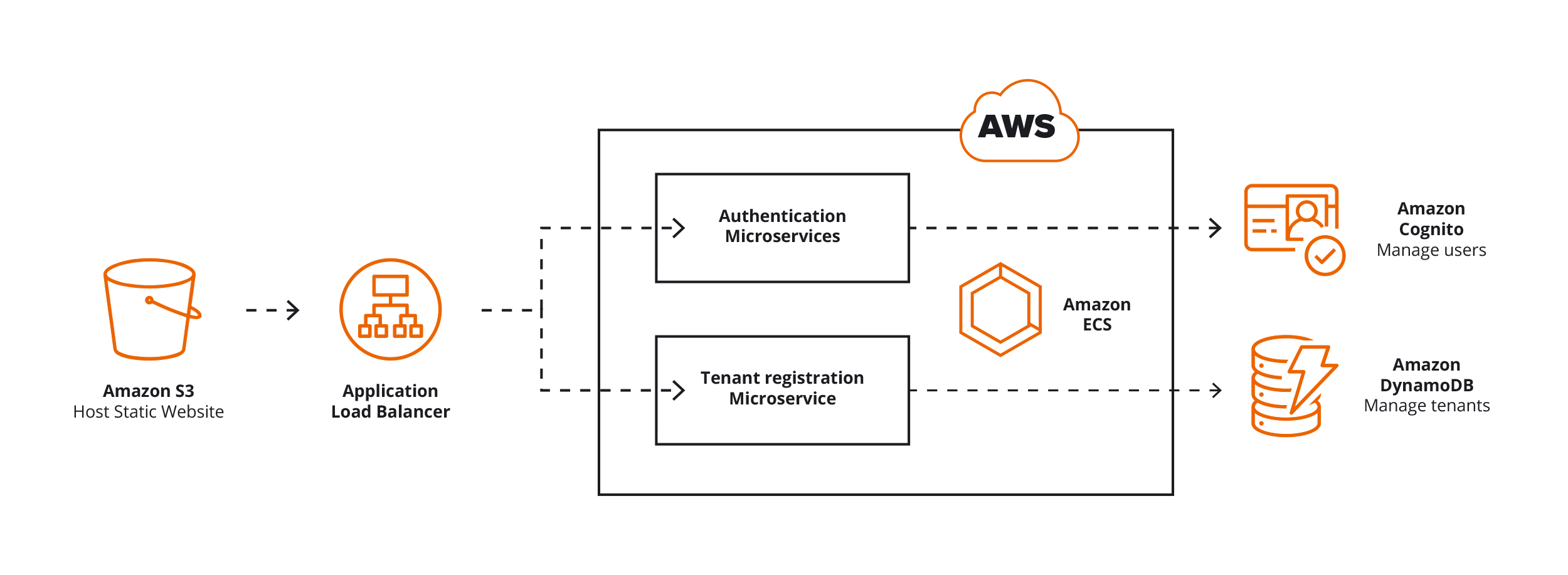Large, mature enterprises often understand many of the benefits received from a SaaS model—and transform operations accordingly.
Current market trends and customer requests drive demand for software as a service, or SaaS, based solutions. Large, mature enterprises often understand many of the benefits received from a SaaS model, including easier maintenance, lower initial costs, painless updates and upgrades, excellent customization, seamless integration, and great scalability—and transform operations accordingly.
However, a SaaS-based model requires systems to manage multiple, similar workloads from hundreds or potentially thousands of different clients. Clients expect a robust, durable, easily scalable, geo-distributed, and secure product. The SaaS solution must include flexible options to meet the client’s needs and expectations.
As a result, developers and system engineers may incur additional operational costs to meet all requirements. Not only for infrastructure-related expenditures, but solution support and maintenance may require add-on fees. Problem resolution, continual release of new features and updates, security incident prevention, monitoring usage, processes automation, and scalability can prove to be additional expenses overlooked in the initial deployment.
For small business owners or those with a very niche market, these extra costs can prove intimidating. The needs are the same, but team resources and budget for the infrastructure and solution development and support may be much more limited.
Components of a micro-SaaS
A SaaS-based model can work well in this instance, as well, with a preference for a micro-SaaS model. Micro-SaaS is a software as a service (SaaS) product, owned by one person or several people, and can be operated by a small team or even by a single person. And yes, this model is profitable.
A vital component of a micro-SaaS solution, and often the most challenging hurdle to overcome with implementation, is to introduce a SaaS identity. For example, how easily does the SaaS owner onboard new users and manage existing users? Or, how are multiple tenants separated? While it sounds as if there will be additional overhead and complexity for the solution, simplify issues by using AWS managed services with the currently existing code.

Tenant registration and authentication are required for micro-services. Dockerization of these services simplifies development, testing, and deployment to production. To orchestrate Docker containers with applications, using AWS managed services, such as Amazon ECS or Fargate, often avoids many infrastructure maintenance headaches. Store information about tenants in DynamoDB. AWS Cognito can be used to support the authentication and onboarding process of the SaaS solution. Benefits include the ability to quickly scale to thousands of users and supports sign-in with social identity providers (like Facebook, Google, Amazon, and others). With properly configured IAM policies, users can scope access to DynamoDB tables. Configuration guarantees proper tenant isolation, even in the case of errors in code, and does not compromise the security of the solution.
With this approach, users pay only for what they need. There are minimal payments for Cognito monthly active user (MAU), DynamoDB usage (possibly even in scope of the AWS Free Tier), vCPU, and GB per hour for Fargate. Additionally, users are charged for each hour that an Application Load Balancer is running, as well as the number of Load Balancer Capacity Units used per hour. A minimal static website on the S3 bucket will most likely be in scope of the SoftServe.
Simplify with APIs
What about the service itself? Possibly the simplest way is to provide customers with an application programming interface (API). Developers can create several services, each communicating with others and third party functions, without implementation knowledge. This allows customers to choose a personal set of API (micro-services) for their use and pay for individually (customize SaaS). The API approach to simplify application development will be flexible, save cost, and be time effective. Developers can easily support, update, release new versions, launch additional services, and decommission legacy APIs.
With AWS services, users can cost-effectively build API-driven architecture, as shown below.

An API gateway significantly reduces maintenance headaches and requires payments only for API calls. API calls can also be a mechanism to bill the end-users. Micro-services themselves can be launched in serverless modes using AWS Lambda. The serverless mode allows users to pay for what they use, based on memory, number of requests, and execution time. Even S3 for static website hosting may not be necessary, based on-site design. For additional detailed information, visit the SoftServe website and review our case studies and experience with API-driven serverless architecture based on AWS cloud services.
In conclusion
Once completed and the micro-SaaS is ready, users can continuously analyze application usage, receive feedback from customers, update apps, and create and launch new microservices. Developers have a secure, scalable, resilient, easily maintained solution, built with minimal efforts in time- and cost-effective manners. And, additional resources with specific in-depth knowledge to create and support the micro-SaaS solution are not required. To start, speak with one of our AWS experts to build a network for future growth and to learn more about our consumer-centric solutions. Contact SoftServe today.


